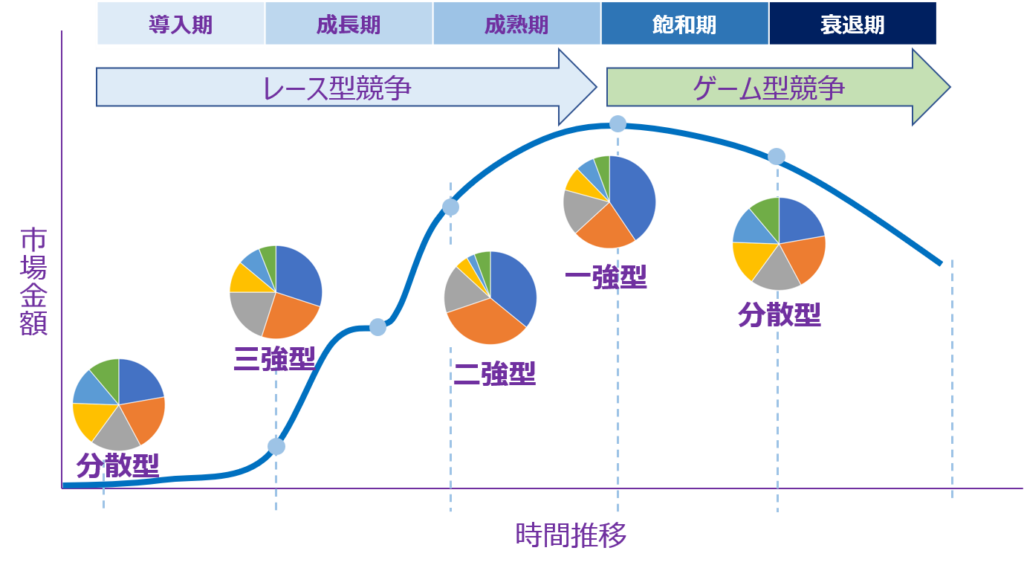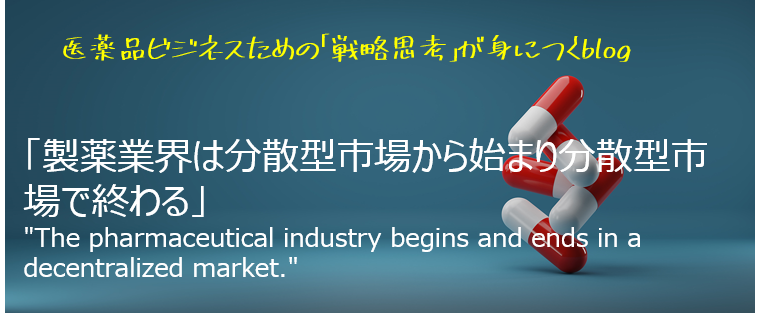
市場ライフサイクルは、導入期、成長期、成熟期から飽和期、そして衰退期へと変遷しますが、それに伴い競争環境は分散型、三強型、二強型、一強型競争市場と推移すると言われています。
医療用医薬品においても同様な現象は見られますが、特許により保護されている医薬品は特許が切れた後にジェネリック医薬品が参入し、再び分散型市場を形成します。
飽和期から衰退期では、市場が縮小しており競争環境は非常に厳しいうえに分散型市場を形成しては、それこそ血で血を洗うレッドオーシャンマーケットです。
そのような競争環境では戦略、すなわち主戦場をどこに置くかが非常に重要になります。
主戦場とは、クラス内で1位を目指すのか、先発品の中で1位を目指すのか、上位3品目の中で1位を目指すのかを決めることです。
主戦場を決めるためにマトリクス分析法は欠かせない分析手法です。
“The pharmaceutical industry begins and ends in a decentralized market.”
The market lifecycle transitions from the introduction phase to the growth phase, then to the maturity phase, followed by saturation and eventually decline. Along with these transitions, the competitive environment is said to shift from a decentralized market to a triopoly, duopoly, or monopoly competition.
A similar phenomenon is observed in the market for medical pharmaceuticals. Patented drugs are protected by patents, but once they expire, generic drugs enter the market, forming a decentralized market again.
During the decline phase from saturation to decline, the market contracts, creating an extremely challenging competitive environment in the form of a red ocean market, where competition is fierce.
In such a competitive environment, strategy, namely determining the primary battlefield, becomes crucial.
The primary battlefield refers to whether to aim for the top position within a specific class, among the original brands, or among the top three products. To determine the primary battlefield, matrix analysis is an indispensable analytical method.

